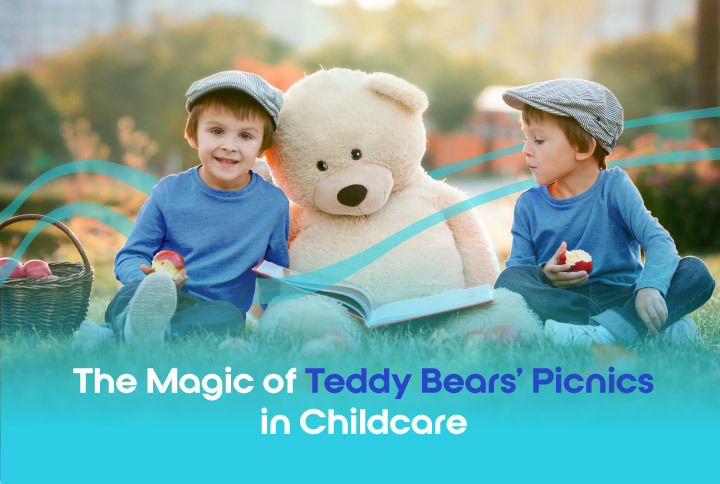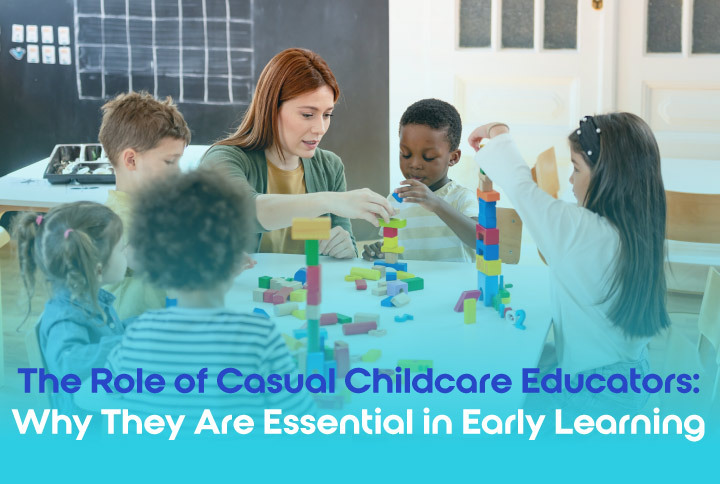
Teddy Bears’ Picnics are a timeless, enchanting tradition in early childhood education that brings out the big magic in little people. Learn more about how they help children build emotional connections, creativity, community and confidence. Before this, get to know what a teddy bear picnic is and how teddy bears benefit children.
What Is a Teddy Bear Picnic?
A teddy bear picnic is a fun and educational children's event. It involves children having a picnic with their family, friends and favourite teddy bear or stuffed animal. They treat their stuffed toy as a guest, interact with others and learn valuable skills. Teddy bear picnics usually happen at a school or community park.
Benefits of Teddy Bears for Children
Teddy bears offer children security, emotional support and creativity.
Comfort and Security
Teddy bears are more than soft toys—they're best friends, bedtime buddies, and essential to a child's sense of safety. When children are invited to bring their bear (or any special comfort toy) to care for, it creates a beautiful bridge between home and their learning environment.
By bringing their bears:
- Children feel more secure and emotionally supported
- Educators gain insight into each child's world
- Emotional literacy is nurtured through storytelling and role play.
And let's be real, watching a toddler pour pretend tea for their teddy? That's the wholesome we all need in our lives.
Emotional Support
Children talk to their teddy bears, helping them express feelings like sadness, anger or worry. It also helps them build emotional strength and confidence.
Creativity
Teddy bears are great for pretend play. Children create stories, games, and adventures that help their imaginations grow.
What Do Children Learn From Teddy Bear Picnics?
Teddy bear picnics teach children social skills and dramatic play. They also encourage movement and community.
1. Dramatic Play
A picnic rug, a few cups and plates and suddenly, you've got a whole world of play. Teddies negotiate turns, asking politely for more fruit and helping their humans set the table.
This style of imaginative play helps children develop the following:
- Language and communication skills
- Social awareness, empathy and role understanding
- Creative thinking and problem-solving.
Educators can extend the learning with prompts like, "What's your bear's favourite snack?" or "Can your teddy help tidy up after the picnic?"
2. Movement, Music and Memory
No Teddy Bears' Picnic is complete without the iconic song – and when you throw in some dancing bears, you've got a whole-body learning experience. Music and movement support:
- Gross motor development
- Rhythm, memory and auditory processing
- Confidence and self-expression in group settings.
And yes, if the Bears start grooving to the beat, we fully support it.
3. Early Literacy
Storytime is different when your teddy is snuggled on your lap. Bear-themed picture books like We're Going on a Bear Hunt, Where's My Teddy? And Can't You Sleep, Little Bear? are gold for engaging young minds. These moments build:
- Vocabulary and language comprehension
- Story sequencing and listening skills
- A love of books and storytelling.
When a child "reads" a story to their teddy afterwards? That's emergent literacy at its finest.
4. Community
Teddy Bears' Picnics bring people together – children, educators and families – in a relaxed and joyful way. When families are invited to pack a teddy, prepare a special snack or join in, it strengthens that all-important sense of belonging. It's an opportunity to:
- Build strong educator-family relationships.
- Acknowledge and include every child's unique background
- Celebrate community, culture and connection.
Everyone is welcome at the picnic table – even the bears who've lost an eye or two along the way.
How Does It Work?
The best thing about a Teddy Bears' Picnic? It doesn't have to be fancy or expensive. You don't need Pinterest-worthy decor. All you need is:
- A picnic rug
- A few simple props
- A bucket-load of imagination.
It's a low-cost, low-pressure experience accessible to every child and with learning opportunities. We’d love to hear your beary cute stories and see your photos! Send them through to jade@zstaffing.com.au.
About Z Staffing
When running or managing a childcare centre, you must ensure you have the correct amount of childcare educators to children to remain in ratio. With industry-wide worker shortages, planned holidays by permanent workers, and sudden staffing issues due to sick leave, it can be a challenge to ensure you have enough staff available.
Back to the top
More articles from Z

The Role of Casual Childcare Educators: Why They Are Essential in Early Learning
.png)
Common Career Changes for Full-Time Teachers

.png?width=394&height=112&name=Logo%20(5).png)

